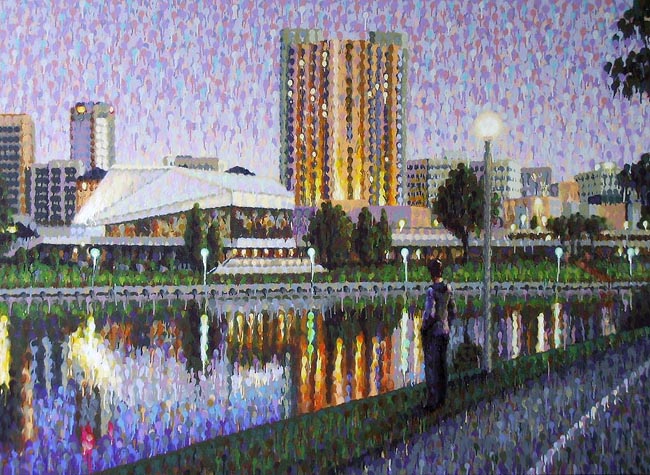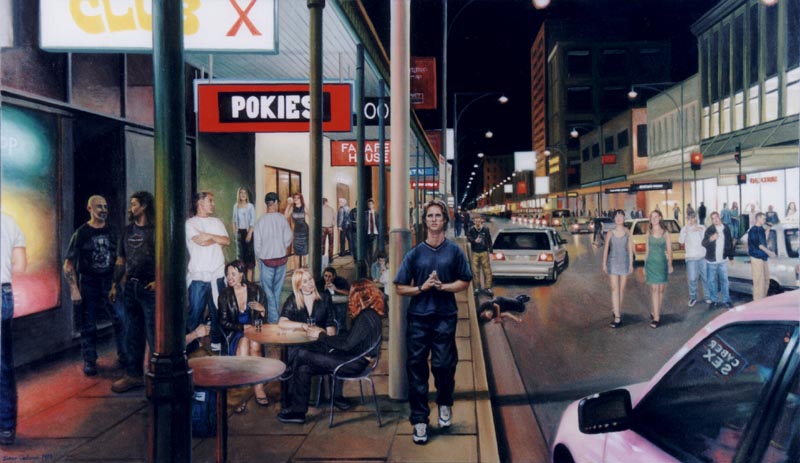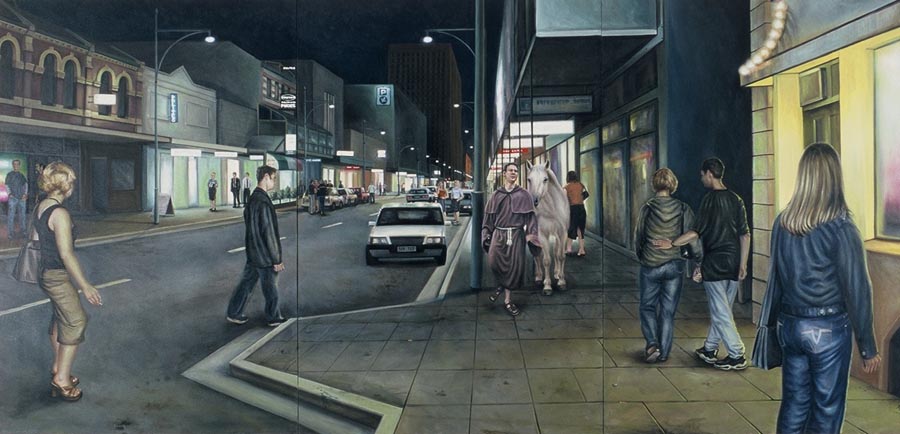|
January 19, 2011
A forthcoming exhibition at the Flinders University Art Gallery is Intangibles in Terra Australis. This brings together contemporary works by Indigenous and non-Indigenous South Australians to explore the idea of place. The project offers urban, rural and remote perspectives giving shape and form to the elusive qualities of where we live. Most of the works are not online.
Included in the exhibition is a work by James Cochran, who is best known for his urban realist narrative painting' with a focus on the marginalised human subject. The work is an Adelaide scene does in using an Aerosol Pointillist technique-- a technique of building an image from multiple aerosol-sprayed dots, each about as large as a 20c coin It is part of a body of work on streetscapes such as Hindley St and Rundle Mall and the parklands.
 James Cochran, Adelaide scene, circa 2004, Aerosol enamel on canvas
James Cochran, Adelaide scene, circa 2004, Aerosol enamel on canvas
The use of industrial spray paint, which comes in cans, links back to graffiti and street art--Cochran's community based spray can art murals---whilst the Pointillist technique refers back to the Post Impressionists---eg., pointillism of Seurat.
I much prefer the earlier and tougher images of Adelaide--eg., the seedy underside of Adelaide--for an exploration of the idea of place:
 James Cochran, Hindley Street and the Temptation of Anthony 1999, Oil on Canvas.
James Cochran, Hindley Street and the Temptation of Anthony 1999, Oil on Canvas.
This is Hindley Street late at night--Saturday night--- with religious references to highlight the nihilism. The religious meaning is clear---moral decline. Yet Christianity is outmoded:
 James Cochran, Francis in Hindley Street 2001, Oil on Canvas.
James Cochran, Francis in Hindley Street 2001, Oil on Canvas.
Adelaide appears to be a city of lost souls, drifting through an urbanscape, in search for some meaning for their lives. I recall the early Marx’s depiction of religion: it was hardly a mere affirmation of the status quo, as it encompasses an embedded critique of things as they are as well as a demand for a better life.
|

perhaps a "hope" for a better life is truer.
They are all good though. Nice to see Francis finally traded in that old donkey